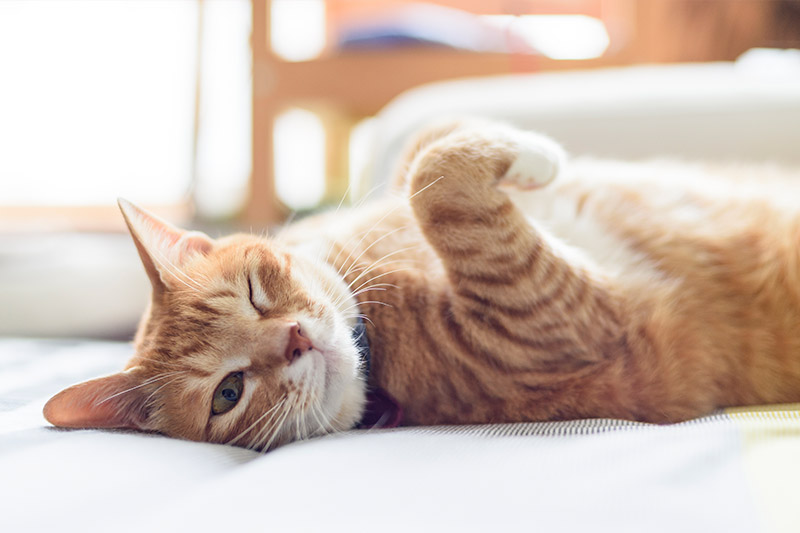Cat Behavior

Overgrooming is one of the most common behavioral problems in cats. As clean animals, cats often lick their fur to keep clean, promote hair metabolism and maintain good circulation. This behavior also helps to relieve emotions. However, when licking becomes too frequent and causes problems such as hair loss and skin damage, it is called over-grooming. This behavior is often related to stress or anxiety.
Overgrooming is common on the sides of a cat’s abdomen, the inside of its front legs or hind legs. Cats with this problem may show signs of baldness, their hair may become coarse and short, and may even be accompanied by abrasions or scratches. Similar phenomena occur not only in domestic cats, but also in many wild or captive large cats such as lions and tigers, and these conditions are often closely related to long-term stress.
Cats are very sensitive animals that rely on a fixed lifestyle. Even slight changes, such as a new pet in the home, rearrangement of furniture, changing cat litter brands, changes in diet, or even a short trip by the owner, can affect their mood and trigger unusual behavior. Interestingly, cats are often good at hiding their emotions, and even if they are feeling anxious, it may not be noticeable in their daily behavior. However, excessive grooming or protest behaviors (such as excessive urination) are their ways of signaling stress.
It is worth noting that when a cat urinates outside the litter box, although it may be caused by a urinary tract infection or other health problems, more often it is actually a protest against stress or change. What’s troubling is that this behavior usually occurs in conspicuous places, such as on the bed, sofa or table, and is a strong expression of the cat’s desire for the owner to pay attention to their emotions. However, it is important to emphasize that cats do not want to retaliate or punish their owners, but are simply eager to convey their anxiety and confusion. Therefore, punishment is not helpful, but is more likely to increase their anxiety.
The key to truly helping cats get rid of these troubles is to find the root cause of the problem and solve it. When the environment changes or daily habits change, try to give your cat more attention and comfort. At the same time, their stress can be reduced through games, interactions and establishing a stable rhythm of life. Understanding cats’ delicate emotional needs is an important step in helping them achieve a balanced mind and body and grow up healthily and happily.










